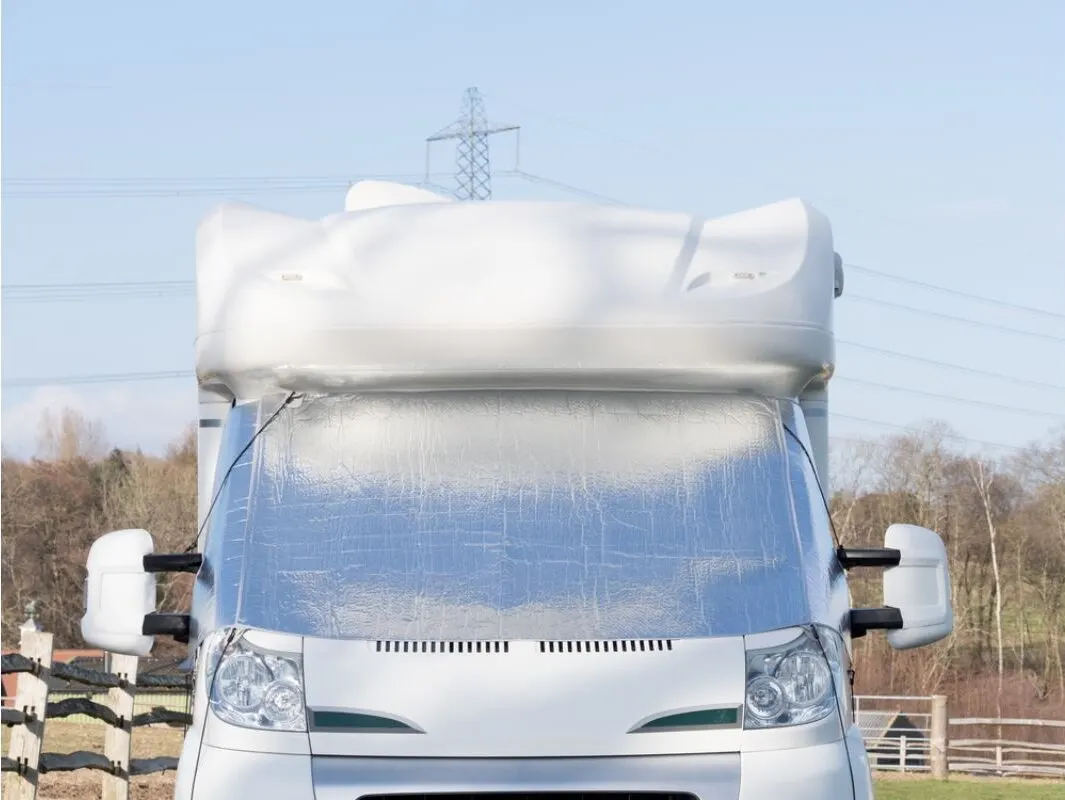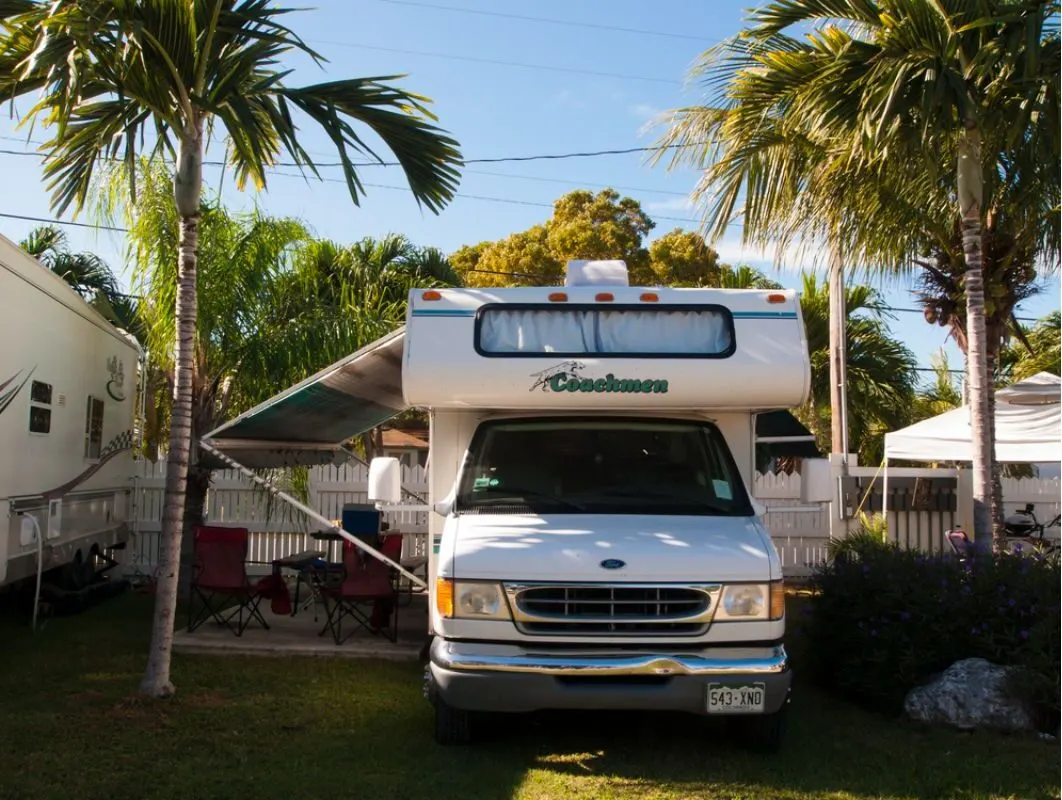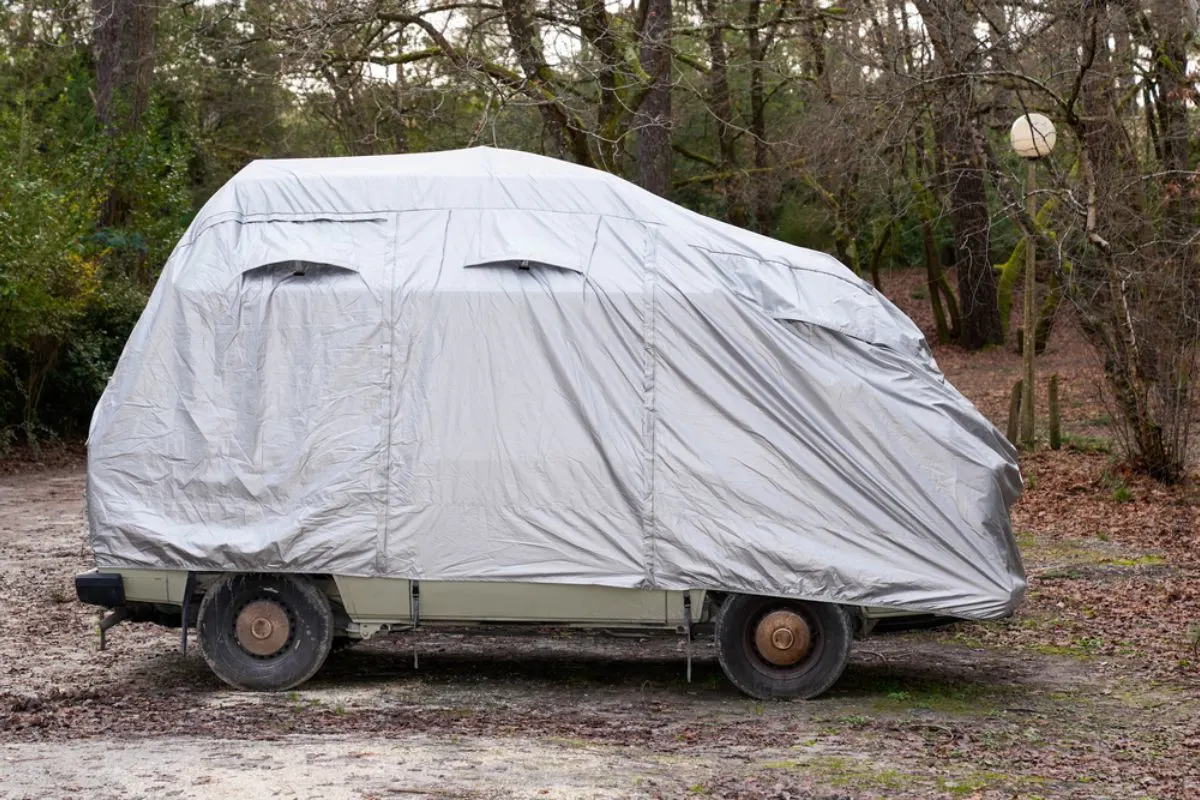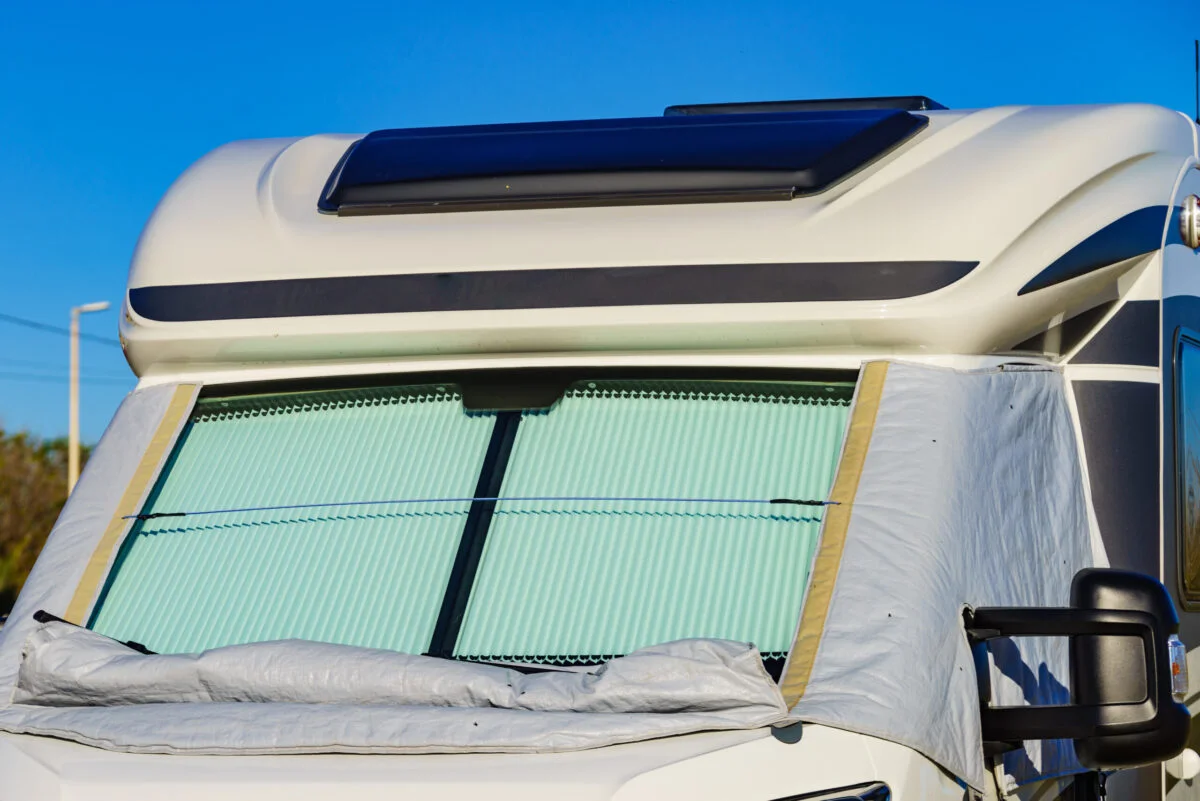
A recreational vehicle is a high-value investment that enables you to travel the country with ease. Most people who purchase these vehicles want to ensure they take care of them.
Protecting the outside of the RV from nature’s elements is one of the best ways you can take care of the RV. Installing an RV cover on the rig can protect it from rain, snow, and some blowing debris in windstorms.
We know that trying to find an RV cover might not be on your list of fun things to do, but it’s one of the best ways you can ensure that you’ll be able to enjoy your RV for as long as possible. While it may seem like a huge undertaking to get the RV cover on the rig, it’s not too bad if you get one that fits properly.
Why Do You Need an RV Cover?
The top reason to get an RV cover is to protect it from rain, snow, dirt, and debris. The finish on the exterior of the RV is made to help protect the frame from those elements, but having dirt or grime sitting on the exterior of the RV can lead to damage. Eventually, they can eat away at the finish on the RV, which can lead to pits in the exterior.
The RV cover will also protect the exterior from the sun’s harsh rays. Over time, an RV that’s left in the sun will start to bleach or fade. This takes away the beauty from the outside of the RV.
It’s much better to spend the money to have a cover on the rig than it is to just let the exterior suffer damage over time. This can help to preserve it in case you want to sell it in the future.
Related: Are RV Covers Waterproof?
What are the Alternatives to Using an RV Cover?

There are two primary alternatives to using an RV cover.
Wash the RV
The first is that you’ll have to make sure you wash the rig off fully between uses. This can use a considerable amount of water because you have to get the entire RV washed off. It’s going to take a long time to get this done in the proper manner.
You have to rinse the RV, scrub it with a gentle soap, and rinse it off. This removes the road grime and dirt from the exterior, but it doesn’t prevent dirt from settling on it again. As you can imagine washing an RV is a massive undertaking because it’s so large. You’ll have to climb up to wash the top of the rig.
Many car washes can’t accommodate an RV so you’d have to go to a semitruck washing area or take care of this task at your home.
This means you’ll have an increase in your water consumption. You’ll also have to continually purchase the cleaner and any tools you need to get the RV washed.
Use an Enclosed Space

The other alternative to an RV cover is housing it in an enclosed space. You may be able to make a prefabricated carport work for the RV, but the fit is often tight.
This means that any misalignment could lead to you scratching the RV. Scratches and scuffs are unsightly and they can lead to debris or dirt having somewhere to settle into.
Depending on the type of carport or other structure, you may need to get a permit to erect it. Some prefabricated models don’t require any type of permit so you may want to look into those; however, you should remember that they aren’t as sturdy as storage buildings that are built on a foundation.
How Should You the Best RV Cover?
There are many things you need to consider when you’re looking into RV covers. All of these work together to help you find the cover that suits your needs and that’s within your given budget.
Consider the Material of the Cover

One of these is the material the cover is made from. Some are made of canvas with a liner, but others are made of polypropylene. The important thing is that you choose a cover that’s waterproof so it can provide protection against rain and snow; however, you shouldn’t ever allow standing water or snow to remain on the cover for too long.
You also need to look at the material on the top of the cover. The top of the RV is subjected to a bit harsher conditions than the sides because dirt, debris, leaves, and twigs, can remain on the top of the RV. Extra reinforcement on the top can offer extra protection.
Measure the Recreational Vehicle
Many RV covers are semi-custom, which means that they fit more than one model. You have to get the measurements of the RV so you know you’re getting the right model cover. If your measurements are even one inch longer than the manufacturer’s limit for an RV model, you need to size up so it will fit correctly.
When you measure the RV, you have to from the tip of the front all the way to the back of the RV. If it has a ladder, include the ladder in the measurement since you want it to be covered by the RV cover. You don’t have to include the propane tank in the measurement because these have separate covers to protect them.
You also need to get the width and height of the RV. These should be taken when all the slides are in, doors are closed, and mirrors are in. This ensures that the RV cover will fit properly once it’s on.
Look at the Features of the Cover

There are three primary features that all RV covers should have.
- Vents along the top edge of the RV cover so it can breathe. These vents prevent mold and mildew from forming in the cover in hot weather.
- Zippers that enable you to open the door of the RV when necessary. Universal RV covers have zippers strategically placed so there should be one that makes it easy for you to open the door.
- Straps that help to keep RV cover securely on the RV. You may even want one that has a weighted bottom to offer even more assurance that it will remain secure.
Bottom Line
Buying an RV cover might be a bit more expensive right at first, but you’ll be able to recoup that money in the savings you’ll have due to not having to pay the cost of frequently having to wash the RV. We know that many buyers appreciate knowing that the RV has been protected.
Finding the perfect RV cover is something that can take a while. You need one that you can apply to the RV with relative ease. These are only effective if they fit properly on the RV.
Remember, buying an RV cover isn’t a one-and-done event. Instead, you should plan to purchase a new cover every two to three years because of the effects of the natural elements on it.
Some more expensive covers may last longer, so that might be a factor to consider if you’d rather have a higher-quality RV cover.
Take the time to review the benefits, style, ease of use, and warranty for any RV cover you’re considering. This can help you to ensure you get the best deal for the money you’re going to spend.
